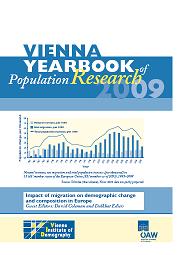
Vienna Yearbook of Population Research 2009, pp. 83-122, 2024/12/12

The paper presents labour supply scenarios in France, Germany, Italy and the United Kingdom for the years 2025 and 2050. These projections were based on the examination of the dynamics of the major contributing factors to the labour supply (LS), i.e. working-age population (WAP), labour force participation rate (LFPR), employment rate (ER) and labour utilisation (LU; defined as time worked per worker per year). The assumptions underlying the scenarios varied from plausible to ‘best case scenario’ to unrealistic. In France and in the United Kingdom, the demographic factors coupled with continuing immigration at the current levels will shape only a marginal decrease of the size of WAP. By contrast, the size of Germany’s and Italy’s WAP will shrink significantly by 2025 and, barring a tremendous surge in immigration, greatly by mid-century. In order to sustain the supply of labour, Italy has to eliminate unemployment. This assumes the sustainability of such factors as the recent increase in LFPR (especially of women) and relatively large immigration. By contrast, Germany has a large potential for increasing labour utilisation. Unless, however, immigration is increased dramatically, this will not suffice to balance the impact of the WAP decrease on LS. Within varying degrees, governments are able to affect the components of labour supply and capitalise on eventual synergies. The analysis relies on data from the United Nations Population Division, OECD, ILO and the European Union.
Keywords: Labour; Working-Age Population; Labour Force; Participation Rate; Employment Rate